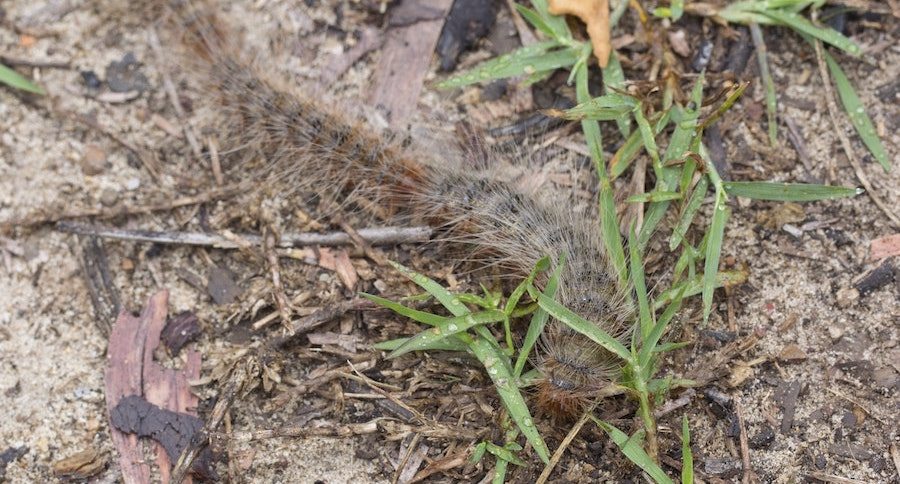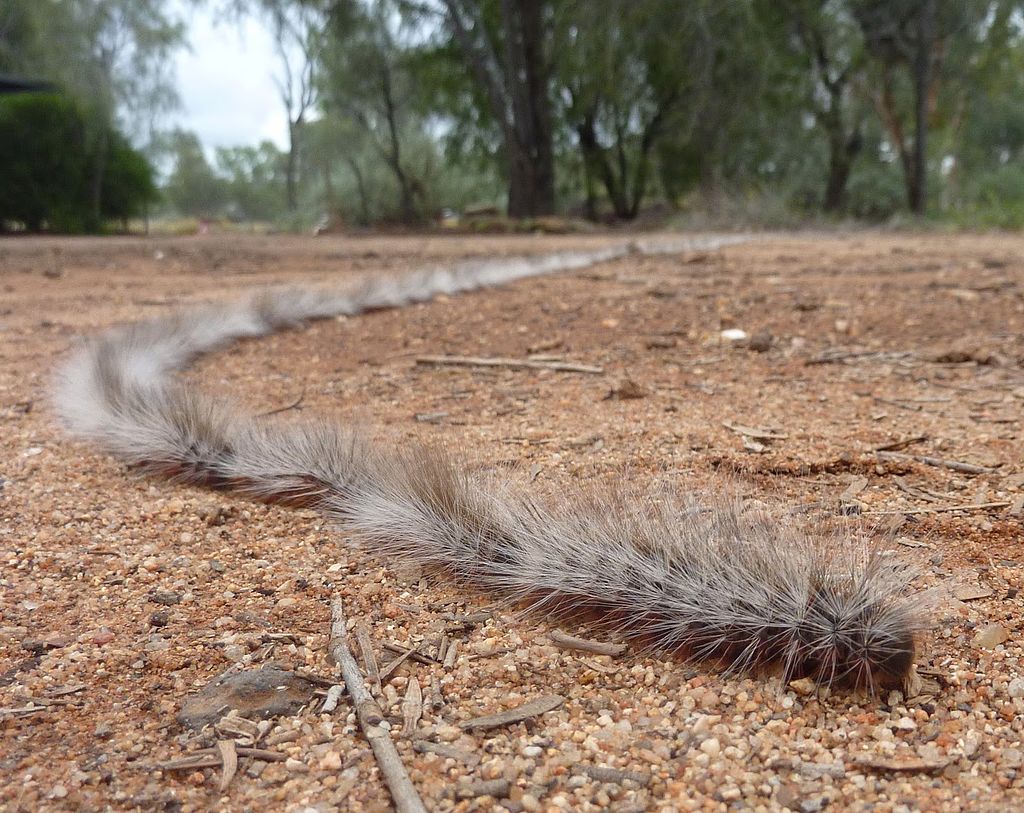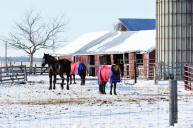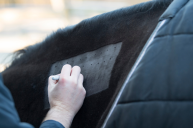These hairy caterpillars are annoying to humans, but a danger to pregnant horses.
There are some strange things that horses can eat, but one of the things they really shouldn't are hairy Australian caterpillars, which can cause abortion in pregnant mares.
The caterpillar species, officially known as the bag-shelter moth (Ochrogaster lunifer), and unofficially as the "itchy-grub," is common throughout Australia, and is to blame for about one-third of the spontaneous abortions in the country's Thoroughbred racehorses.
The caterpillar's name is derived from its behavior. They gather in large groups, often at the base of trees, or in their canopies, and wrap themselves in silk, creating a structure that looks like a purse, or bag.
They have other strange habits as well, including their summer and autumn processions, where they line up head-to-tail and follow each other to their next food source. Children have been known to amuse themselves by rearranging these procession lines, so that the front of the lead caterpillar comes in contact with the rear of the last one, dooming them to walk forever in a circle.
However, few children will play this trick more than once, as the caterpillars are covered with 2.5 million hairs, which prompt severe itching or painful dermatitis when touched.
The hairs are even more dangerous to horses, especially pregnant mares. If a mare who is in foal accidentally eats one, the hairs are digested and passed around the horse's body. If the hairs lodge in the placental membrane they can cause inflammation and a condition known as equine amnionitis, resulting in the loss of the fetus.
According to researchers at the University of Queensland, the abortions caused by these caterpillars cost horse owners millions of dollars every year. That's why a team, led by biologist Meron Zaluki, created a set of guidelines for horse owners on how to keep their horses safe from bag-shelter moths.
Some of the most important recommendations are the most obvious, like locating and safely removing eggs and their silk "purses" from horse pastures. However, anyone handling them should take the proper precautions.
In an interview with Cosmos, Zaluki said:
"It's important to be careful and to wear protective equipment when handling caterpillar material as the hairs can cause skin irritation and potentially get into eyes."
As bizarre as the bag-shelter moth might be, here's something even more bizarre: some researchers are working on methods for biological control of the moth, such as using predatory wasps to attack the caterpillar eggs.
What do you think of this strange but true problem? Share your thoughts below.
WATCH NOW: Ginny's Incredible Adoption Story





